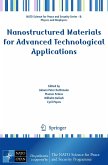Because of their structural and dynamical properties, microheterogeneous systems have been employed as solvent and reaction media both to synthesize and stabilize nanoparticles. Following this route, inside their nanometer-sized heterogeneities the nanoparticles of many different substances have been incorporated. The book shows the distinct advantages of this synthetic strategy over that of many other methods. Moreover, it furnishes to the reader a collection of theoretical and experimental facts allowing him to reduce the number of trial and errors necessary to arrive at an optimal synthetic protocol.
From the reviews: "The book ... crosses the boundaries of physical, theoretical, and inorganic chemistry, with the aim of discussing and reaching a better understanding of nanoparticle synthesis in the context of microheterogeneous systems. .... This book is the first attempt, so far as I know, to respond to the current demand for a comprehensive survey of knowledge in the area of synthesis in confined volumes. ... The contents of the book are well organized and easily accessible through the table of contents." (Gleb B. Sukhorukov, Angewandte Chemie, Vol. 45 (42), 2006) "The goal of the author in writing this book was to describe the basics behind using surfactant-based micro-heterogeneous systems to produced nanoparticles. ... The author does an excellent job of reviewing the recent, very extensive, literature on the use of micelles, reverse micelles, microemulsions etc., for producing nanoparticles. ... the book is a useful compilation of the literature for synthesizing nanoparticles in surfactant-based micro-heterogeneous systems." (Gregory V. Hartland, Journal of the American Chemical Society, Vol. 128 (18), 2006)









